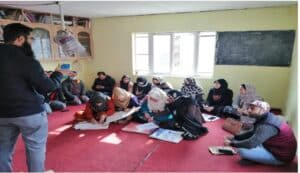What makes health misinformation different is the challenge of fact-checking it, because healthcare is personal and contextual
Health professionals, governmental institutions, and individuals now frequently share health information via social media. Ironically, it has also become a fertile ground for health misinformation. Health-related information claiming to be fact but incorrect according to current scientific research is known as health misinformation. This has emerged as a serious concern for public health. In the early stages of the COVID-19 pandemic, we were concerned about the impact of false information shared on social media on people’s health and how it aggravated the existing social crises. This persuaded us to conduct research on the issue which is still ongoing. We found that health, disaster, and politics are the three major domains where misinformation can have a negative impact on society.
With health misinformation easily available, so called home remedies and miracle treatments are becoming popular. Illiteracy, social ties, personal biases, device attachment and ease of sharing are some of the factors contributing to the spread of misinformation. Netizens believe the information that fortifies their preexisting beliefs. This is known as confirmation bias and results in an echo chamber effect. Misinformation also comes in handy for social media platforms as it creates more engagement and shareability for the content, which, in turn, translates into more revenue.
Limitations of fact-checking
What makes health misinformation different is the challenge of fact-checking it, because healthcare is personal and contextual. To make matters worse, fact-checking is a time consuming process. Within the fact checking duration, the misinformation may have already persuaded the users. Especially in homegrown spheres, checking the veracity of information may become too challenging. Even if certain information is accurate in some parts of the world, corroborating it with binary answers like true or false might be a challenge.

Infrastructure to curb health misinformation
The reappearance of health misinformation in different contexts or regions with slight alteration is another challenge of health misinformation. After fact-checking, false information will resurface in a different form, wasting the fact-checkers’ time and effort. Misinformation spread in the vernacular languages can make the situation dreadful by influencing more people. The lack of fact-checking infrastructure in local languages makes it even worse. Social media messaging platforms in such a scenario are the most vulnerable to misinformation. Unlike Twitter and Facebook, it is difficult to control the spread of misinformation WhatsApp and Telegram, where it is end-to-end encrypted, and platform owners have limited access to the user’s content.

Fostering critical thinking
People’s beliefs and social media health-seeking and sharing behavior are resistant to change. Educating users through literacy campaigns can be one of the best interventions against misinformation. To an extent, we could control the misinformation if we could influence the users to verify the source every time they shared information. We should shift users’ attention towards the accuracy of the information. Users should be equipped to pause and ask themselves why they believe the content is fake or real. The platform owners should also encourage their users to focus on the accuracy of the content they post or share online.
Our recent research on social media misinformation shows that psychological motives and social rewards such as reputation, reciprocity, trust, and monetary incentives can also influence users’ misinformation sharing behavior. At a systemic level, tech solutions are not a panacea, but that too is needed due to the large-scale impact they may create. Fact-checking by experts, source rating of the received information, flagging the misinformation, attaching warning tags, crowdsourced fact-checking, and misinformation detection models are some of the existing strategies to control the spread of misinformation.
Health misinformation increases the mortality rate and can weaken the public health infrastructure, as we have seen during the recent pandemic. It can also break the individual’s trust in the system. Vaccine hesitancy among citizens is the perfect example of it, making it all the more critical to ensure only accurate information reaches the public.
Also Read: Lessons in tackling health misinformation


















Add Comment